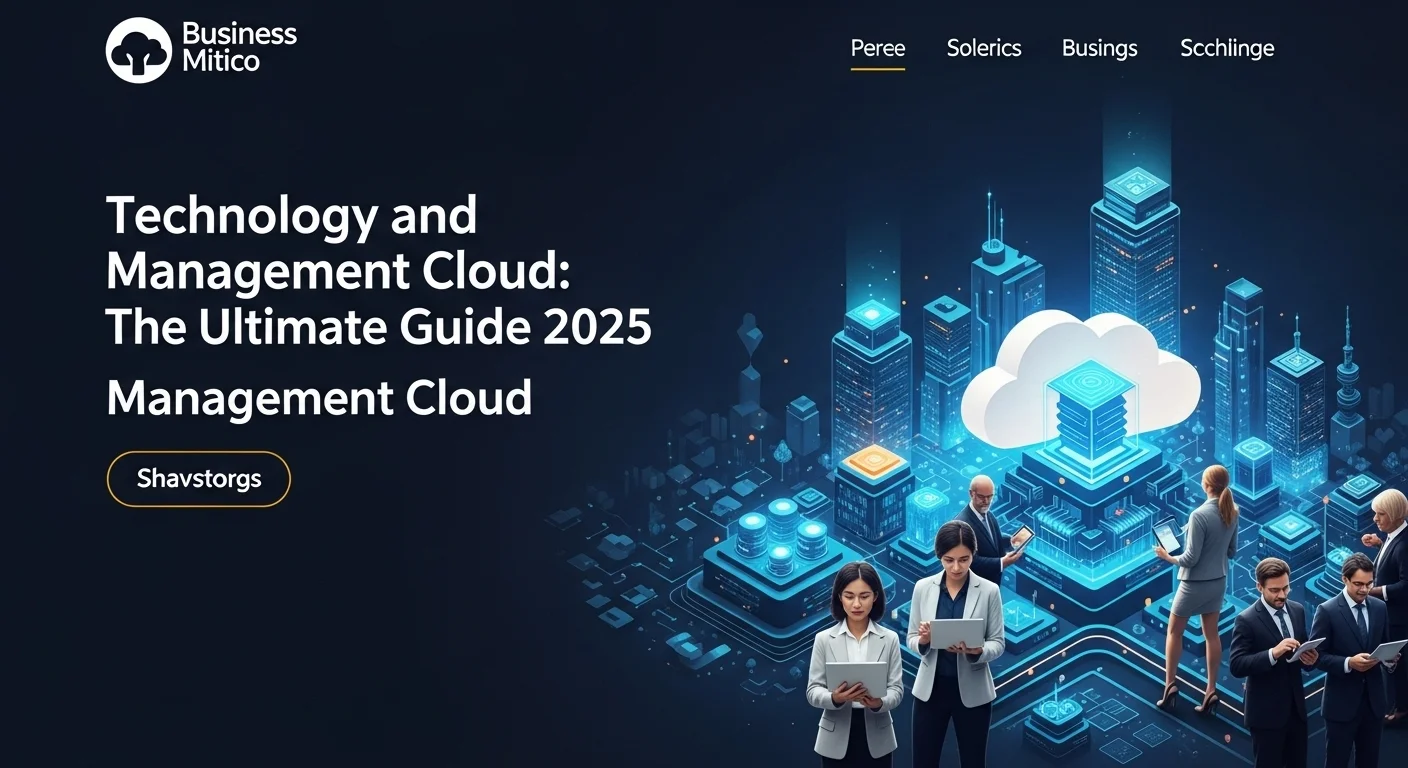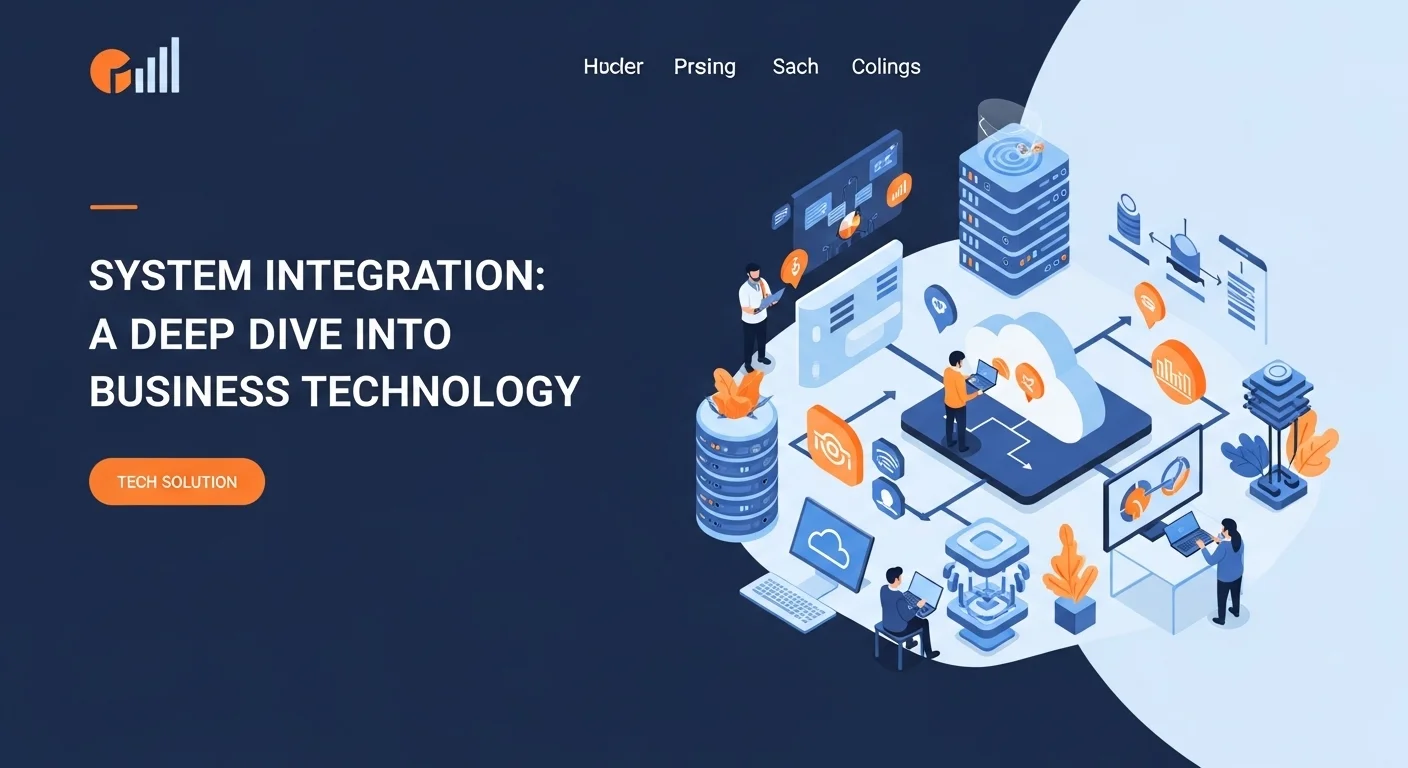Mastering the Cloud: A Real-World Guide to Cloud Management

Executive Summary
I remember my first big cloud project. The promise was incredible—flexibility, power, innovation. But soon, the reality hit: spiraling costs, security alerts, and a tangled mess of services. That's when I truly understood the power of *cloud management*. It’s not just about tools; it’s the strategy that turns a chaotic cloud environment into a streamlined engine for growth. This guide is my experience distilled—everything I've learned about taming cloud complexity. We'll cover everything from smart cost-saving (FinOps) and ironclad security to choosing the right hosting model for your business. Whether you're a leader focused on ROI or a tech pro on the front lines, this is your roadmap to making the cloud work *for* you.
Table of Contents
Table of Contents
- What is Cloud Management and Why Does It Matter?
- The Core Pillars of Cloud Management
- A Deeper Look at Cloud Security
- The Foundational Role of Identity Management
What is Cloud Management and Why Does It Matter?
Let's be honest, the cloud is the engine of modern business. It offers amazing flexibility and power. But without a driver, that engine can easily go off the rails. This is where cloud management comes in. In simple terms, it's the art and science of controlling your cloud resources. Think of it as the command center for your entire cloud operation, whether you're using a public cloud like AWS, a private one, or a mix of both in a hybrid setup. I've seen firsthand what happens without a solid management plan: budgets get blown, security holes appear out of nowhere, and performance issues frustrate users. A good strategy prevents these headaches and makes sure you're actually getting the benefits you signed up for.
The need for cloud management has grown because IT isn't simple anymore. Most companies I work with use services from multiple cloud providers alongside their own data centers. This creates a scattered, complex landscape where it's easy to lose track of things. Data is everywhere, applications are spread out, and enforcing consistent rules becomes a nightmare. A cloud management layer acts as your single source of truth, giving you a unified view of everything. It allows your IT team to monitor performance, keep an eye on spending, enforce security rules, and automate tasks across all these different environments from one place. This centralized control is what separates a chaotic cloud from a strategic one.
The Core Pillars of Cloud Management
Effective cloud management isn't a single tool but a combination of practices that work together to keep your environment healthy, secure, and optimized.
1. Cost Management and FinOps: The pay-as-you-go cloud model is a double-edged sword. It's flexible, but costs can skyrocket if you're not paying attention. I've seen this 'cloud sprawl' sink budgets. Cloud management platforms are essential for financial control, giving you clear visibility into where your money is going. This has led to a practice called FinOps, which is all about creating a culture of cost accountability. It gets your engineers, finance people, and business teams talking to each other to make smart spending decisions. This means hunting down wasted resources, right-sizing services so you're not overpaying, and using discounts from providers. The goal is simple: get the most value for every dollar you spend.
2. Performance Monitoring and Observability: It's not enough for your apps to be 'on'; they have to perform well. Good management solutions offer deep insights into performance. We're talking more than just uptime—they track CPU usage, memory, network speed, and more. By collecting logs, metrics, and traces, these platforms help you understand not just *what* went wrong, but *why*. From my experience, this is the key to fixing problems fast, keeping applications snappy, and planning for future growth without hitting performance walls.
3. Automation and Orchestration: You can't manage a dynamic cloud environment manually. It's just not possible at scale. Automation is your best friend here. Management tools help you automate routine tasks like setting up servers, configuring networks, or scaling up resources during peak traffic. Orchestration takes it a step further by automating entire processes, like deploying a complex application or running a disaster recovery drill. Using Infrastructure as Code (IaC), for example, lets you define your entire setup in a file. This makes deployments predictable, consistent, and easy to audit—a true game-changer for modern cloud operations.
4. Governance and Compliance: Moving to the cloud doesn't mean you can ignore regulations like GDPR or HIPAA. A management platform helps you enforce your governance policies automatically. You can set up 'guardrails' that stop users from launching services that aren't compliant or making changes that violate security rules. This is absolutely critical for staying compliant, passing audits without a sweat, and reducing the risk of costly fines.
A Deeper Look at Cloud Security
Security is, without a doubt, the most important part of cloud management. Cloud providers give you a secure platform, but you share the responsibility. They secure the *cloud*, but you have to secure what you put *in* the cloud. This makes security management a top priority for every company.
A solid security strategy has multiple layers. It begins with getting your posture right using tools that constantly check for misconfigurations. Network security is another piece of the puzzle, using virtual firewalls and threat detection to shield you from attacks. Your data has to be protected with strong encryption, both when it's stored and when it's moving across the network. I always tell my clients to take a proactive approach, using AI-powered tools to spot suspicious activity before it turns into a major breach. By integrating all these functions, you create a holistic defense system built for today's distributed environments.
The Foundational Role of Identity Management
At the very core of cloud security is Identity and Access Management (IAM). Think of it as the bouncer for your cloud club. In a world without a traditional office network, your user's identity is the new perimeter. IAM is the set of rules and tools that ensures the right people get access to the right things at the right time—and nothing more.
Good IAM revolves around a few key ideas. You have users (people or apps) who are placed into groups for easier management. Roles grant a specific set of permissions for a limited time, which is a great way to enforce the 'principle of least privilege.' Policies are the documents that spell out exactly who can do what. And I can't stress this enough: Multi-Factor Authentication (MFA) is non-negotiable. It adds a crucial layer of security on top of a simple password. Without solid identity management, all your other security efforts can be undermined. It's the bedrock of a secure cloud strategy.

Complete Guide to Cloud Management Tools and Solutions
Now that we've covered the 'what' and 'why,' let's get into the 'how.' Building a successful cloud management strategy is a mix of smart technical choices, solid business processes, and the right tools. It's about choosing an architecture and operational model that truly supports your business goals. For many businesses I've worked with, this journey involves everything from powerful third-party platforms and Infrastructure as Code (IaC) to specialized services like managed hybrid cloud hosting. The aim is always the same: create a resilient, efficient, and secure cloud ecosystem that can keep up with your business.
The technical backbone of modern cloud management often starts with the native tools from cloud vendors (like the AWS, Azure, or Google Cloud consoles). These are great for managing things within a single cloud, but they can create headaches in a multi-cloud world. That's where third-party Cloud Management Platforms (CMPs) like VMware Aria, CloudBolt, or Flexera come in. They offer a 'single pane of glass'—one unified dashboard to manage everything, no matter which cloud it's on. These platforms are a huge help in creating a consistent strategy for cost control, automation, and governance across your entire IT landscape.
Technical Methods and Architectural Blueprints
A mature cloud management approach moves beyond clicking around in a console and embraces automation. Here are some of the key technical methods that make this possible.
1. Infrastructure as Code (IaC): This is a cornerstone of modern IT. Think of it as creating a detailed blueprint for your cloud house. Instead of manually setting up servers and networks, you write code that defines what your infrastructure should look like. Tools like Terraform or AWS CloudFormation read this code and build it for you. The benefits are huge: your deployments are automated, perfectly consistent every time, and you have a clear record of every change, which is gold for security and compliance.
2. Containerization and Orchestration (Kubernetes): With the shift to microservices, containers (like Docker) have become incredibly popular. They package an application and all its dependencies together so it runs the same way everywhere. Kubernetes is like the conductor for your container orchestra. It automates the deployment, scaling, and operation of these applications. In a way, Kubernetes acts as its own mini-management platform for your apps, handling things like load balancing and self-healing. Integrating Kubernetes into your broader cloud management strategy is essential if you're building modern, cloud-native apps.
3. AIOps - AI for IT Operations: As your cloud environment grows, the amount of data it generates can be overwhelming for any human team. AIOps is like hiring a brilliant AI assistant for your IT team. It uses machine learning to analyze massive amounts of data from logs, monitoring tools, and alerts in real time. It can spot anomalies, predict potential problems before they happen, and pinpoint the root cause of an issue in seconds. AIOps is shifting cloud management from being reactive (fixing things after they break) to being proactive and even predictive, which means less downtime and a happier IT team.
Navigating Complexity with Managed Hybrid Cloud Hosting
For many businesses, a hybrid model—mixing public cloud with their own private infrastructure—is the perfect fit. It lets them keep sensitive data in-house while using the public cloud for its scale and cost-efficiency. But let's be clear: managing a hybrid environment is incredibly complex. I've seen many teams struggle with networking, data syncing, and keeping security consistent across both worlds.
This is where managed hybrid cloud hosting can be a lifesaver. With this model, you hire a specialized company to manage your entire hybrid setup for you. They handle the private cloud, the public cloud accounts, and the complex networking that ties them together. They take care of all the day-to-day operations like patching, monitoring, and backups. This frees up your internal IT team to focus on what they do best: building great applications and driving the business forward. A managed provider brings deep expertise and guarantees performance with service-level agreements (SLAs), making it a great option for companies that want the benefits of hybrid cloud without the management headache.
Advanced Strategies for Security and Identity Management
As your cloud usage grows, your security approach needs to mature with it. Advanced security management in the cloud moves beyond basic checks to a more unified and automated approach.
Cloud-Native Application Protection Platforms (CNAPPs): These platforms are the next evolution in cloud security. They combine multiple tools—like Cloud Security Posture Management (CSPM) and Cloud Workload Protection (CWPP)—into one integrated solution. This gives you a complete view of security from the development pipeline all the way to production, helping you spot and fix risks across the entire application lifecycle.
Advanced Identity Management: We take the 'principle of least privilege' to the next level with advanced identity solutions. This includes 'Just-in-Time' (JIT) access, where permissions are granted for a very short time to perform a specific task. We also use Privileged Access Management (PAM) tools to tightly control and monitor accounts with admin-level permissions. These strategies are critical for reducing your attack surface and protecting against credential theft, which is one of the most common ways breaches happen.
Comparing Cloud Management Approaches
Choosing your management strategy depends on your team's expertise, your budget, and how complex your environment is. Here’s a quick breakdown of the common paths I see clients take:
| Approach | Description | Pros | Cons | Best For |
|---|---|---|---|---|| DIY with Native Tools | Using the built-in management tools from your cloud provider (e.g., AWS CloudWatch, Azure Monitor). | Low initial cost; deeply integrated with the platform. | Gets complex in a multi-cloud setup; requires significant in-house skill. | Teams deeply committed to a single cloud with a strong engineering culture. || Third-Party CMP | Deploying a comprehensive Cloud Management Platform like CloudBolt or Morpheus. | A single dashboard for multi-cloud; powerful automation and cost features. | Can be expensive; requires effort to implement and maintain. | Enterprises with complex multi-cloud or hybrid environments who need unified control. || Managed Hybrid Cloud Hosting | Outsourcing the day-to-day management of your cloud infrastructure to a specialized provider. | Lifts the operational burden; access to expert skills; predictable costs. | Less direct control over infrastructure; potential for vendor lock-in. | Businesses that want to focus on apps, not infrastructure, or lack deep cloud expertise. |Ultimately, there's no single right answer. A successful strategy comes from understanding your unique needs and committing to continuous improvement, finding the right mix of technology, security, and partnerships to drive your business forward.

Tips and Strategies to Improve Your Cloud Experience
Mastering the cloud is a journey, not a destination. As your business and technology evolve, your management strategies must adapt. This final section is all about actionable advice—tips and best practices I've shared with clients to help them get the most value from their cloud investments. It's about cultivating a mindset of continuous optimization. By applying these proven strategies and looking toward the future of cloud management, you can turn your cloud infrastructure from a cost center into a true engine for innovation.
The bedrock of any long-term strategy is solid governance. Without clear rules, even the best plans can fall into chaos. This is why I always recommend mature organizations establish a Cloud Center of Excellence (CCoE). This is a dedicated team with experts from IT, finance, security, and business leadership. Their job is to set the standards, evangelize best practices, and guide the company's cloud strategy. This ensures everyone is moving in the same direction, preventing the silos and fragmentation that can undermine your efforts.
Best Practices for Effective Cloud Management
Adopting these proven best practices is your roadmap for navigating the complexities of the cloud and building a solid cloud operational model.
1. Implement a Granular Tagging Strategy: This might be the simplest yet most powerful tool you have. Tagging is just assigning metadata (like 'Project: Phoenix' or 'Owner: Marketing') to your cloud resources. A mandatory and consistent tagging policy is my non-negotiable first step. It's essential for allocating costs and seeing exactly which teams or projects are spending what. Tags are also invaluable for automation (e.g., automatically backing up everything tagged 'production') and security (e.g., identifying all resources that handle sensitive data).
2. Embrace a FinOps Culture: FinOps (Finance + DevOps) is a cultural shift that brings financial accountability to the cloud's variable spending model. It's about making your engineers aware of the cost of their decisions. Think of it as giving them a real-time budget tracker. When you give teams visibility into costs, you empower them to make smart trade-offs between performance, speed, and price. This makes cost optimization a shared, continuous responsibility, not just a quarterly cleanup task for the finance team.
3. Prioritize Continuous Security Monitoring: The threat landscape is always changing, and so is your cloud environment. A 'set it and forget it' security approach is a recipe for disaster. Effective cloud security management demands continuous security monitoring. This means using tools that constantly scan for vulnerabilities, misconfigurations, and compliance issues. Security alerts should be piped directly into your team's workflow so they can be addressed immediately. Regular penetration tests and audits are also crucial for proactively finding and fixing security gaps.
4. Automate Everything Possible: Manual tasks are slow, prone to human error, and simply don't scale. The mantra of modern cloud management should be 'automate everything.' From provisioning infrastructure with IaC to responding to security events. For example, you can create a workflow that detects a misconfigured firewall rule and instantly reverts it to a secure state. Or one that automatically shuts down development environments on weekends to save money. Automation boosts efficiency and reliability, and it frees up your talented engineers to work on more important things.
Essential Tools and Business Resources
You can't implement these practices without the right tools. The market is full of great options, from native cloud services to powerful third-party platforms.
- Cost Management and Optimization: Native tools like AWS Cost Explorer and Azure Cost Management are a good starting point. For more advanced FinOps, including multi-cloud cost allocation, I've had great success with third-party platforms like nOps, Apptio Cloudability, or Flexera One.
- Security and Compliance: For a comprehensive view of security, leading CNAPP tools like Palo Alto Prisma Cloud, Wiz, and Check Point CloudGuard are excellent. They unify everything from posture management to workload protection, giving you a single view of risk.
- Automation and Orchestration: Terraform is the industry standard for IaC. For configuration management, tools like Ansible, Puppet, and Chef are widely used, often integrated into CI/CD pipelines like Jenkins or GitLab for a fully automated workflow.
- Managed Services: If you're looking to accelerate your cloud journey or have a skills gap, partnering with a managed hybrid cloud hosting provider is a smart strategic move. They bring years of experience and ready-made tools, offering a turnkey solution to complex management challenges.
If you ask me where this is all headed, the answer is one word: intelligence. The infusion of Artificial Intelligence is reshaping every part of cloud management. AIOps platforms are becoming revolutionary. By applying machine learning to oceans of operational data, they can offer predictive insights, spotting potential outages before they ever happen. They can perform root cause analysis in seconds, a task that might take a human team hours.
This is leading us toward self-healing infrastructure that can automatically detect and resolve issues without anyone lifting a finger, drastically improving reliability. At the same time, trends like serverless and edge computing are pushing the management focus further up the stack, away from servers and towards application logic and data. The core principles of cost management, security, and governance will always apply, but our tools and techniques will continue to evolve. In these new zero-trust worlds, effective identity management will become more critical than ever.
In conclusion, achieving an exceptional technology experience with the cloud is a strategic commitment. It requires dedication to best practices like tagging and continuous monitoring, fostering a cost-conscious FinOps culture, and embracing automation. By choosing the right tools and partners, your business can build a robust, secure, and cost-effective cloud foundation. Looking ahead, embracing emerging technologies like AIOps will be the key to ensuring the cloud remains a powerful catalyst for your success.
Expert Reviews & Testimonials
Sarah Johnson, Business Owner ⭐⭐⭐
The information on Cloud Management is solid, but I'd love to see more real-world examples for business owners like me.
Mike Chen, IT Consultant ⭐⭐⭐⭐
A useful article on Cloud Management. It definitely helped me get a better grasp of the topic, though some of the concepts could be simplified a bit more.
Emma Davis, Tech Expert ⭐⭐⭐⭐⭐
Fantastic article! It's incredibly comprehensive on Cloud Management. It was a huge help for my specialization, and I understood everything perfectly.



